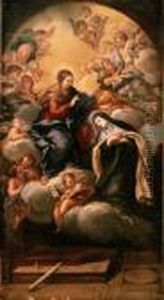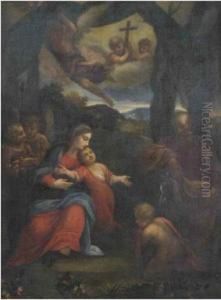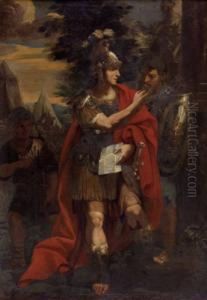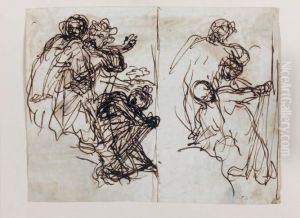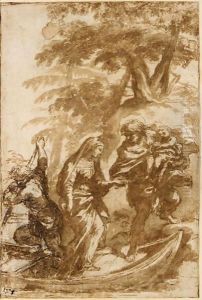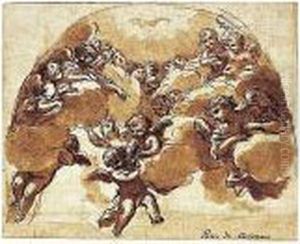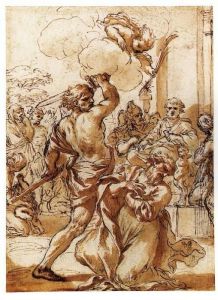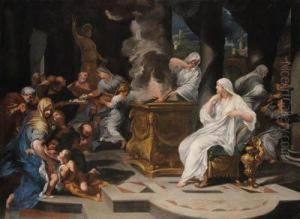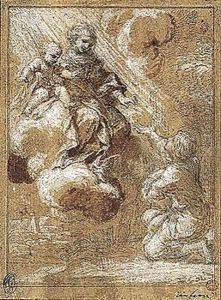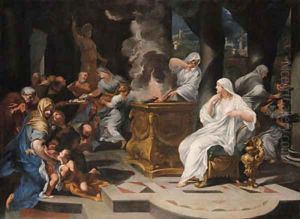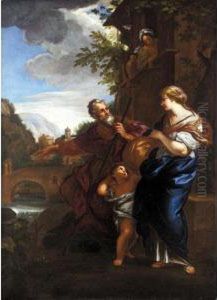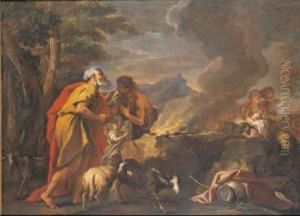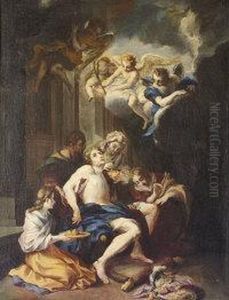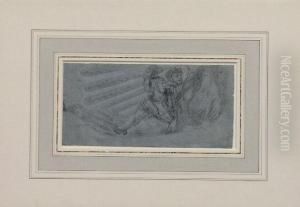Ciro Ferri Paintings
Ciro Ferri was an Italian Baroque artist, born in Rome in 1634. He was a notable painter and architect of his time, but he is especially remembered as a pupil and a key follower of Pietro da Cortona. Ferri became one of Cortona's principal assistants and continued his teacher's decorative style with proficiency and continuity.
Ferri's early training began under the guidance of his uncle, Archangelo Salvi, before he entered the studio of Pietro da Cortona, where he would spend most of his career. He proved to be an adept student, absorbing Cortona's style and eventually taking over the master's workshop after his death in 1669.
Throughout his career, Ciro Ferri worked on various high-profile projects and commissions. He painted frescoes and completed numerous altarpieces and canvases for churches in Rome and other Italian cities. Some of his most notable works include frescoes in the Palazzo Pitti in Florence and in the Church of Santa Maria in Vallicella, also known as the Chiesa Nuova, in Rome.
Ferri was also involved in tapestry design and was a respected architect, though his architectural contributions have been overshadowed by his painting. His style was characterized by dynamic compositions, an expressive use of color, and the theatrical sense of movement, which was typical of the High Baroque period.
Despite his success, Ciro Ferri's work was later criticized for lacking the originality and vigor of his mentor, Cortona. However, his paintings were influential in the development of later Baroque and Rococo art. Ferri's legacy was continued by his pupils, who included notable artists such as Giovanni Battista Gaulli (Baciccio).
Ciro Ferri's career spanned over five decades, and he became one of the leading artists in Rome during the second half of the 17th century. He died in Rome in 1689, leaving behind a body of work that is still appreciated for its embodiment of the Baroque spirit.





